In a striking display of nature’s raw power, Komodo dragons, native to Indonesia’s Komodo and surrounding islands, have become highly efficient predators, capable of paralyzing and consuming the goats that roam the mountainous regions of their habitat. This unique predatory behavior highlights the Komodo dragon’s evolved hunting skills and the specific adaptations that have made it one of the most formidable reptiles on Earth.
Komodo dragons, the world’s largest lizards, possess an incredible arsenal that enables them to hunt a variety of animals, including wild goats that inhabit the rugged terrains of Komodo Island. These goats, which are agile and can traverse rocky slopes, usually have a natural advantage in mountainous environments. However, the Komodo dragon’s strength, patience, and unique biological adaptations allow it to hunt and catch them despite their speed and agility.
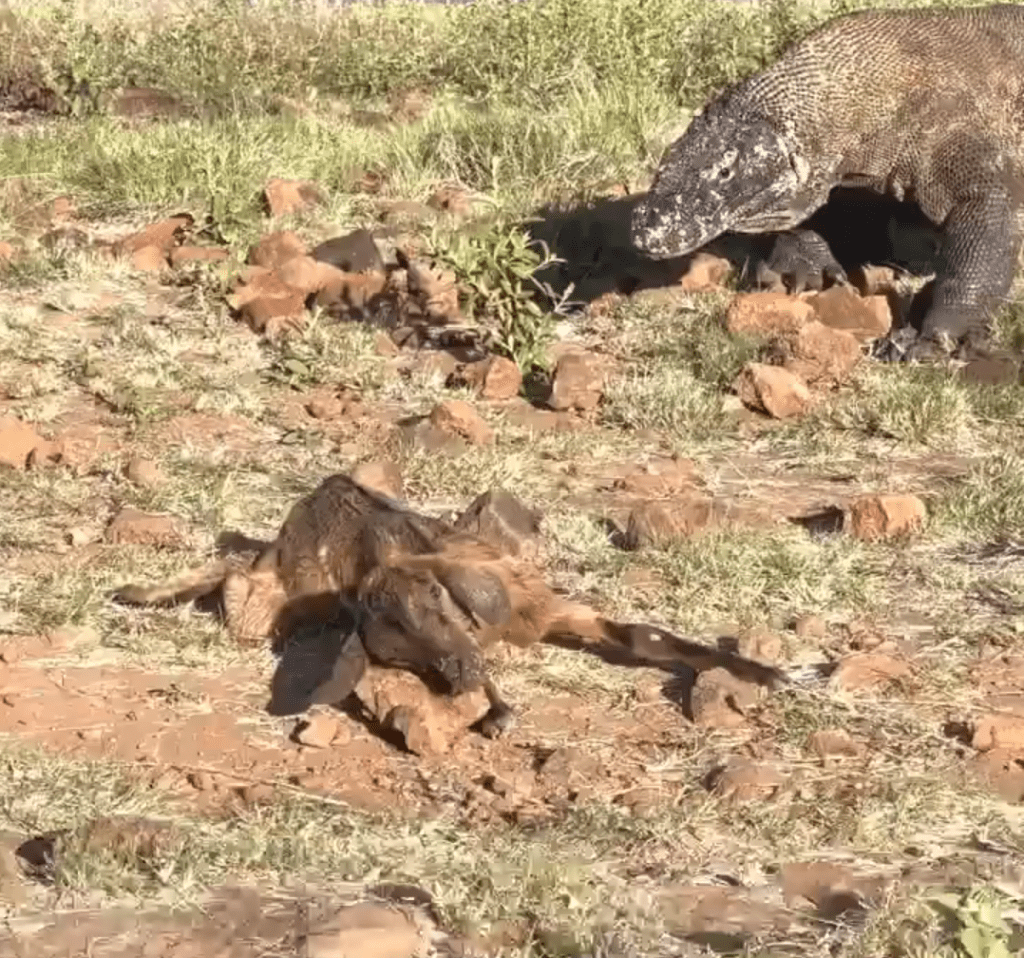
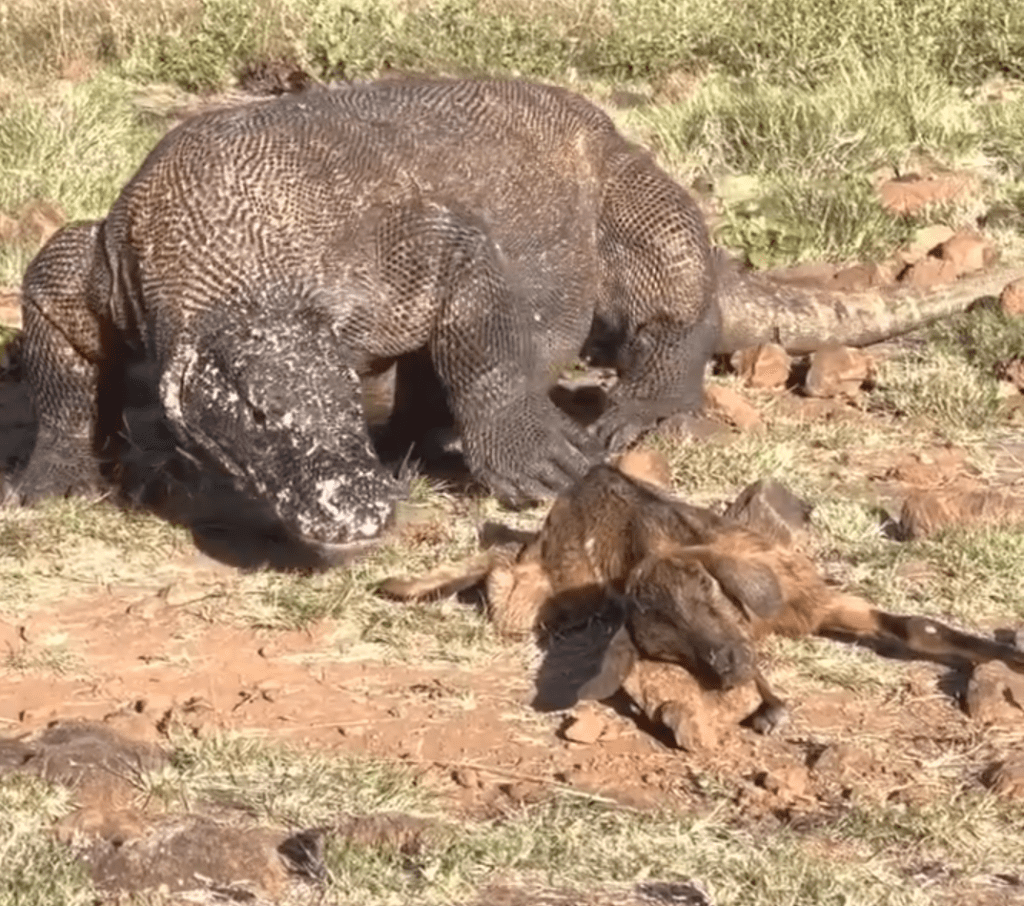
One of the Komodo dragon’s primary hunting tools is its saliva, which contains a mixture of bacteria and venom. When a Komodo bites its prey, like a goat, the venom enters the wound, causing a rapid drop in blood pressure and ultimately leading to paralysis. The bacteria from the saliva may also lead to infections, further weakening the prey. This venomous bite is an adaptation that gives the Komodo dragon an edge in hunting larger and faster animals; once bitten, the goat has little chance of escaping its fate.
Komodo dragons are also patient predators. After delivering a venomous bite, they may follow their prey for hours until the venom takes full effect, paralyzing the animal and making it easy for the Komodo to catch up. This patient stalking method conserves the Komodo’s energy, allowing it to hunt efficiently in the tough, dry environments of the islands. Their strong sense of smell helps them track prey over long distances, an essential skill on the expansive and uneven terrain of the mountains.
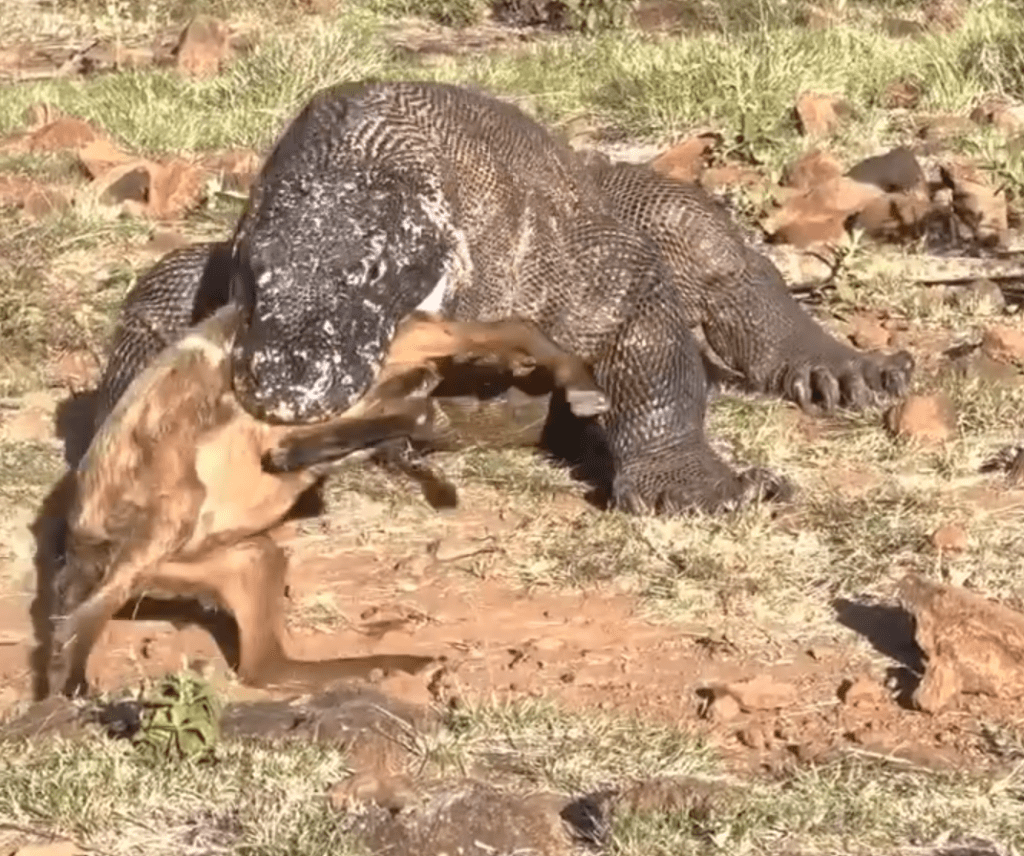
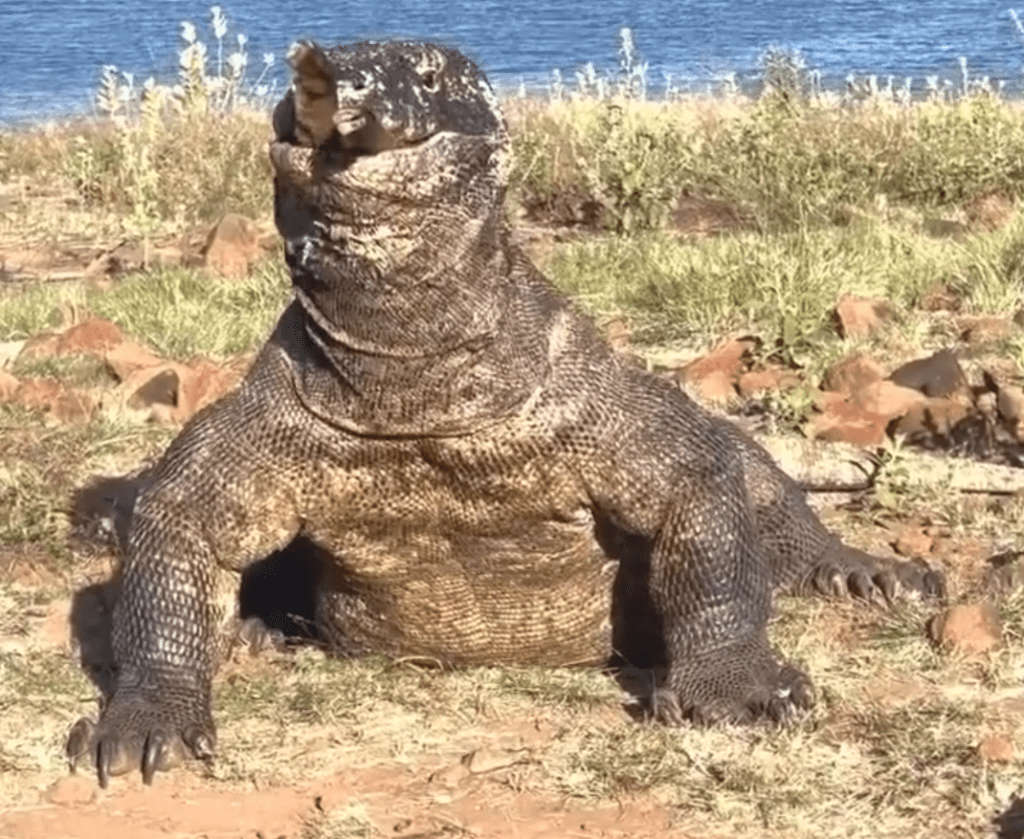
Once the prey is paralyzed, the Komodo dragon’s powerful jaws and sharp, serrated teeth come into play. These teeth are designed to tear through flesh and bones easily, enabling the Komodo to consume large portions of its prey in one sitting. A full-grown Komodo dragon can consume up to 80% of its body weight in a single meal, meaning that one goat can provide sustenance for an extended period. After such a feast, a Komodo dragon may not need to eat again for several weeks, showcasing its efficiency as a predator and its ability to adapt to scarce food resources.
The hunting of mountain goats by Komodo dragons is not only a testament to their strength but also plays an important ecological role on Komodo Island. As apex predators, Komodo dragons help control the populations of various species, including wild goats, thereby maintaining a balanced ecosystem. This balance is crucial in such isolated habitats, where any disruption can have a cascading effect on the entire food web.
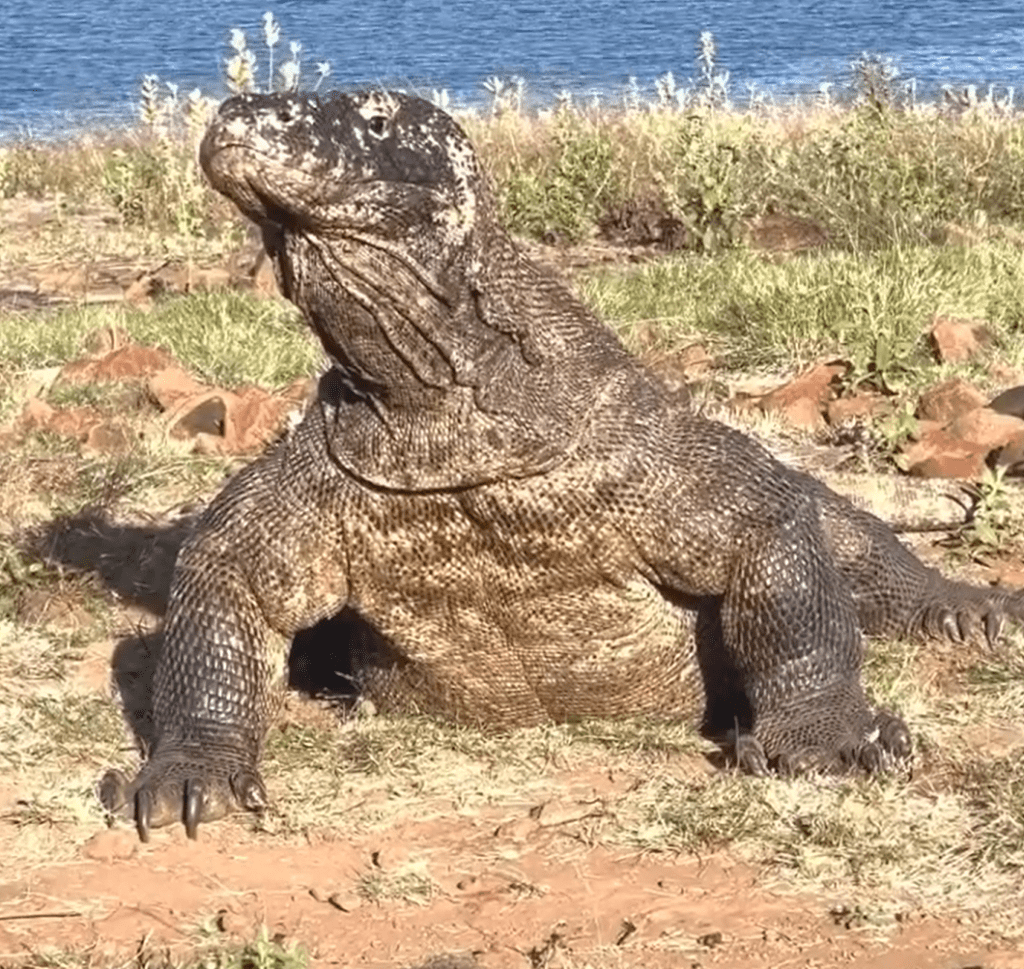
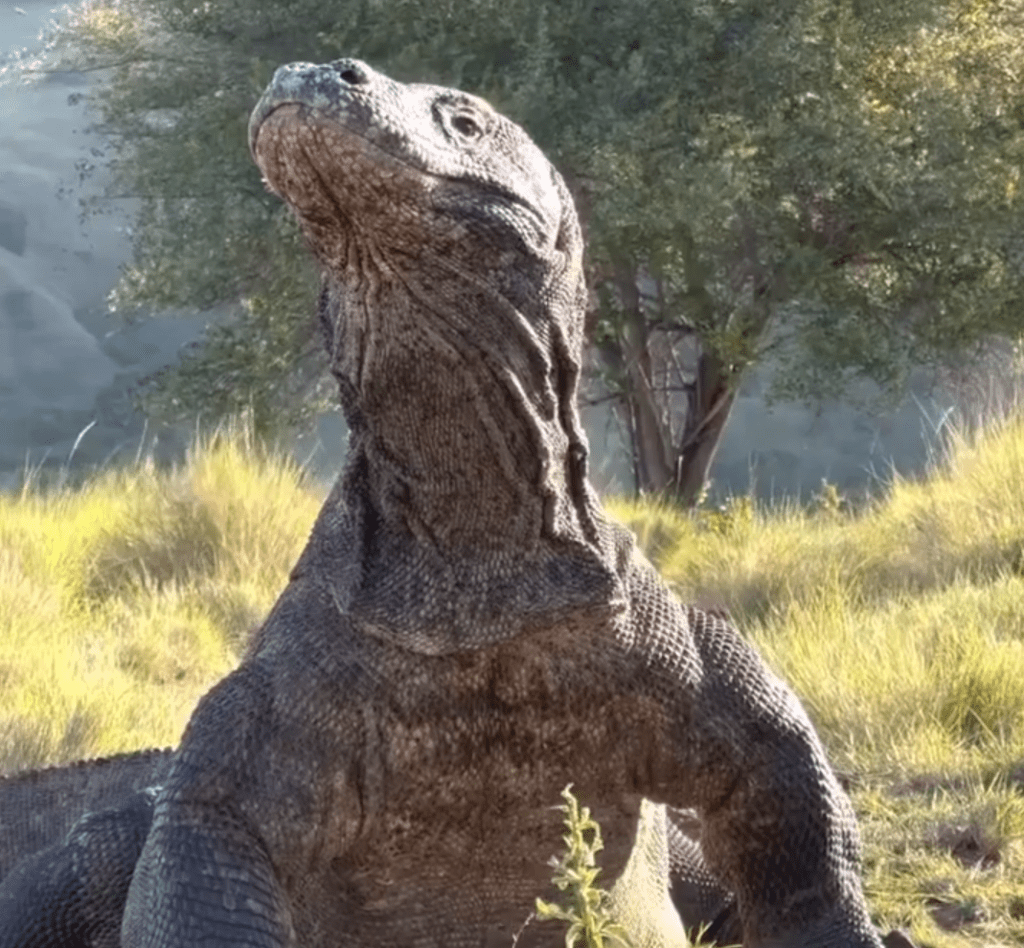
While this predatory behavior may seem brutal to onlookers, it is a natural aspect of the ecosystem. The interactions between Komodo dragons and mountain goats have evolved over time, creating a dynamic relationship in which each species adapts to survive alongside the other. In response to predation, goats may choose safer, less accessible areas to graze, while Komodos develop new strategies to hunt efficiently in their challenging terrain.
Tourists visiting Komodo Island are often fascinated by the spectacle of the Komodo dragon’s hunting techniques, but experts warn against getting too close. These reptiles are dangerous, unpredictable, and can attack if they feel threatened. Conservationists emphasize that protecting these creatures in their natural habitat is essential to preserving this rare ecological balance, as the Komodo dragon is classified as a vulnerable species due to habitat loss and human activity.
Efforts to conserve the Komodo dragon’s habitat are ongoing, ensuring that this ancient predator can continue to thrive on its island home. Observing the Komodo dragon’s hunting prowess offers a window into the wonders of evolution, as these lizards have adapted perfectly to their role at the top of the food chain, where they keep nature’s balance intact on Komodo Island.


